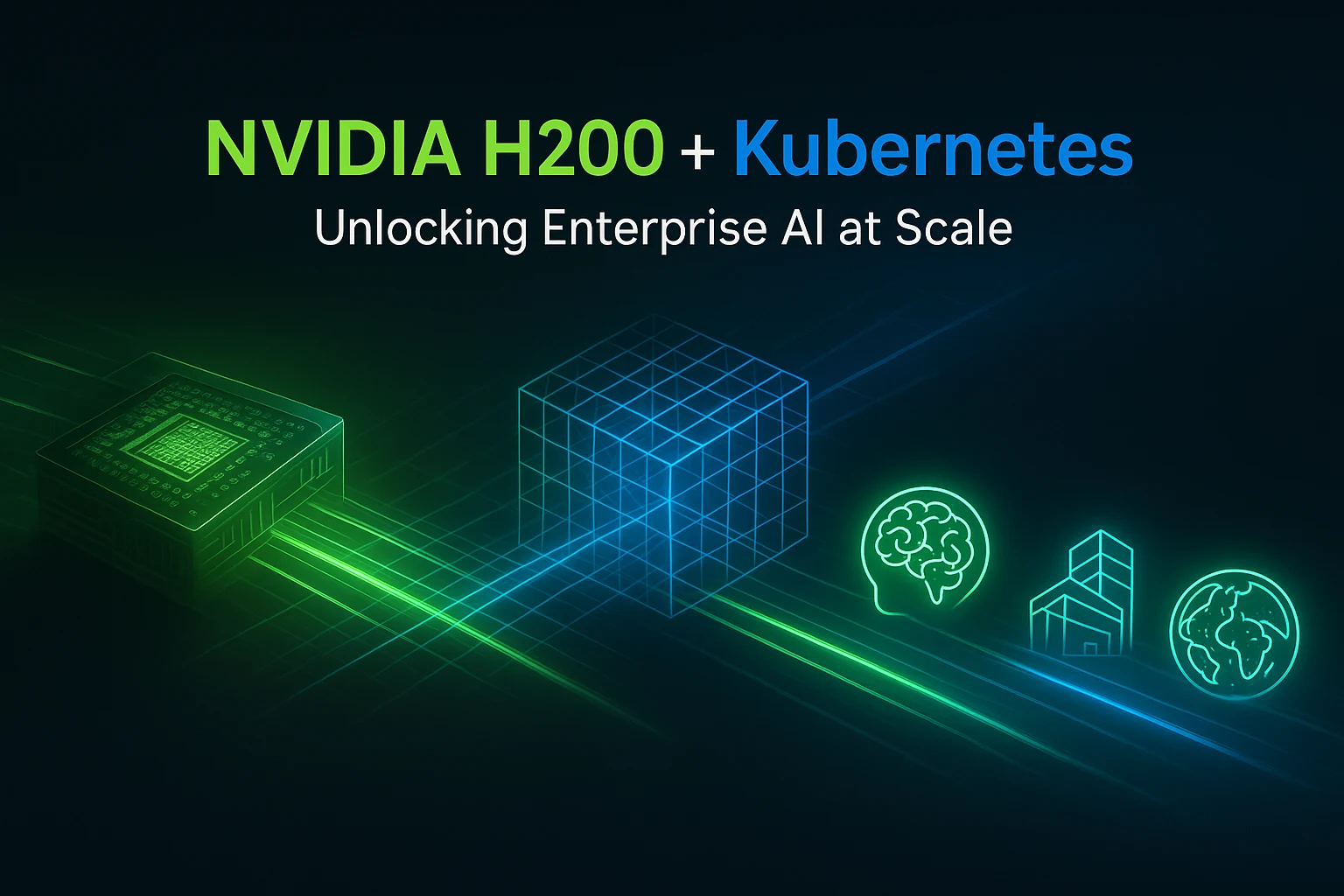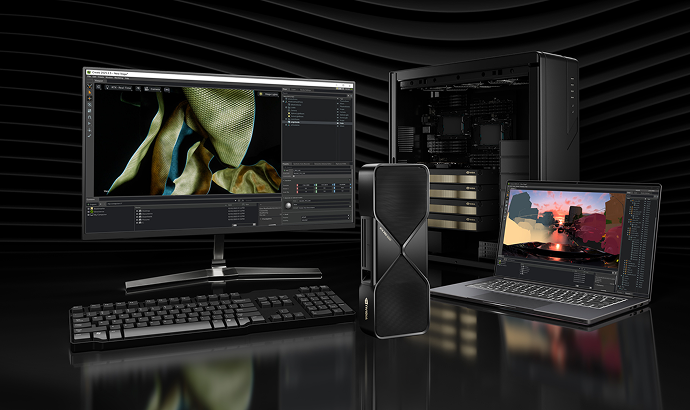

Writing About AI
Uvation
Reen Singh is an engineer and a technologist with a diverse background spanning software, hardware, aerospace, defense, and cybersecurity. As CTO at Uvation, he leverages his extensive experience to lead the company’s technological innovation and development.

The NVIDIA H200 GPU is described as a generational leap in high-performance computing and AI acceleration. Its most significant feature is that it is the first GPU to integrate 141 GB of high-bandwidth HBM3e memory, a substantial increase from the 80 GB in the H100, combined with 4.8 TB/s of memory bandwidth. This allows the H200 to process significantly larger datasets directly in memory, which reduces data movement bottlenecks and accelerates performance. In benchmarked inference tasks, the H200 shows 1.6x to 1.9x performance improvements over the H100. Strategically, this enables enterprises to train massive multi-trillion-parameter AI models, use larger context windows for LLMs, and run advanced simulations that were previously impractical. It also allows businesses to consolidate their infrastructure by running demanding workloads on fewer, more powerful nodes.
While the H200 provides powerful hardware, Kubernetes provides the essential orchestration layer needed to realise its full potential in enterprise settings. As the de facto standard for scaling AI and machine learning workloads, Kubernetes’ primary role is to dynamically allocate GPU resources, automate the scaling of workloads, and integrate with advanced scheduling frameworks. This ensures that H200-powered clusters are not just high-performing but also adaptive. For example, Kubernetes can automatically assign multiple H200 GPUs to a single software container (pod) for complex model training, while simultaneously distributing smaller inference tasks across various nodes to support production-scale AI services. By combining the H200 with Kubernetes, organisations can build an elastic, efficient, and automated infrastructure for their AI workloads.
The NVIDIA GPU Operator is a tool that simplifies and automates the deployment and management of all necessary NVIDIA software components on Kubernetes clusters. Instead of requiring IT teams to manually install and configure drivers, container tools, and monitoring software, the operator handles this entire process automatically and ensures all dependencies are kept up to date. The operator deploys a production-ready stack that includes the NVIDIA GPU driver, the Container Toolkit, the Kubernetes Device Plugin for resource management, the DCGM for health monitoring, and the MIG Manager for GPU partitioning. This automation is critical for maintaining consistency and reliability in large-scale enterprise environments.
Multi-Instance GPU (MIG) is a feature of the NVIDIA H200 that allows a single physical GPU to be partitioned into several smaller, secure, and fully isolated GPU instances. Each of these MIG partitions functions as an independent GPU, with its own dedicated memory, compute cores, and cache resources. Within a Kubernetes environment, this enables fine-grained resource allocation, allowing multiple different workloads or tenants to run simultaneously on a single H200 without interfering with one another. This capability significantly improves GPU utilisation, reduces idle capacity, and is particularly valuable in shared clusters where various jobs, from model training to real-time analytics, must coexist efficiently.
The combination of the NVIDIA H200 and Kubernetes orchestration offers a significant strategic advantage by creating an elastic, enterprise-grade AI infrastructure that can scale on demand, optimise costs, and accelerate time-to-insight. This setup allows businesses to consolidate their infrastructure, running workloads that previously needed large clusters on fewer, more powerful H200 nodes, which provides a dual benefit of performance efficiency and cost control. The resulting platform is not only high-performing for current needs but is also resilient and adaptable to future demands, such as new AI models and multi-cloud strategies, without requiring constant and disruptive redesigns. For IT leaders, this investment positions their infrastructure to be durable, efficient, and cost-justified, ensuring a sustained return on investment (ROI) from their AI initiatives.
Yes, the NVIDIA H200 is already in production and supported by hyperscale cloud providers in their managed Kubernetes environments. For instance, Google Cloud has introduced A3 Ultra VMs on Google Kubernetes Engine (GKE), which are powered by NVIDIA H200 GPUs and are designed for large-scale AI training and inference. Similarly, CoreWeave, a specialised GPU cloud provider, has optimised its managed Kubernetes service (CKS) for NVIDIA deployments, including the H200, tailoring its infrastructure for high-throughput AI workloads like generative AI and scientific simulations. This adoption by major providers demonstrates the maturity and enterprise-readiness of H200-powered infrastructure and offers organisations a turnkey path to using this technology at scale.
To maximise the performance of H200 GPUs, Kubernetes can be extended with advanced scheduling and autoscaling patterns. The open-source Kubernetes AI (KAI) Scheduler improves upon default capabilities with features like “gang scheduling,” which ensures all parts of a distributed job start simultaneously to avoid wasting GPU cycles. When paired with the H200’s high-bandwidth interconnects, these scheduling patterns reduce latency for large-scale AI training. For elasticity, Kubernetes’ Horizontal Pod Autoscaler (HPA) can be enhanced with GPU-aware operators. These tools can automatically scale up the number of H200-backed pods during a surge in inference requests and scale them down when demand falls, which effectively balances performance with operational costs.
The ability of Kubernetes to manage GPUs is fundamentally enabled by the device plugin framework. This framework serves as a standard interface that allows hardware vendors like NVIDIA to expose their devices, such as the H200 GPU, as first-class, schedulable resources within a Kubernetes cluster, just like CPU or memory. The NVIDIA Kubernetes Device Plugin, which is part of the GPU Operator stack, implements this standard. It ensures that workloads can properly request and utilise the advanced features of the H200, including its large HBM3e memory and Multi-Instance GPU (MIG) partitions, enabling the automation and consistency required in enterprise environments.
We are writing frequenly. Don’t miss that.
